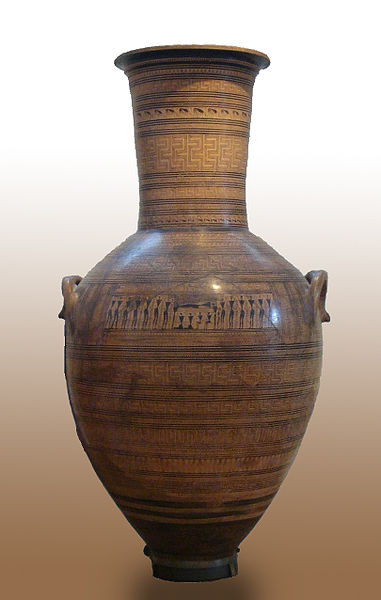Greek art began in the Cycladic and Minoan civilization, and gave birth to Western classical art in the subsequent Geometric, Archaic and Classical periods. It absorbed influences of Eastern civilizations, of Roman art and its patrons, and the new religion of Orthodox Christianity in the Byzantine era and absorbed Italian and European ideas during the period of Romanticism, until the Modernist and Postmodernist.
Greek art is mainly five forms: architecture, sculpture, painting, pottery and jewelry making.
The Stag Hunt Mosaic at the Archaeological Museum of Pella (3rd BC)
Mosaic of Daphni Monastery (ca. 1100)
St Theodora icon by Emmanuel Tzanes, an example of the Cretan School
Ηistoria (Allegory of History) by Nikolaos Gyzis (1892)
Geometric art is a phase of Greek art, characterized largely by geometric motifs in vase painting, that flourished towards the end of the Greek Dark Ages and a little later, c. 900–700 BC. Its center was in Athens, and from there the style spread among the trading cities of the Aegean. Though a not currently accepted concept by all scholars, the Greek Dark Ages were considered to last from c. 1100 to 800 BC and include the phases from the Protogeometric period to the Middle Geometric I period, which Knodell (2021) calls Prehistoric Iron Age. The vases had various uses or purposes within Greek society, including, but not limited to, funerary vases and symposium vases.
The Dipylon Amphora, mid-8th century BC, with human figures. National Archaeological Museum, Athens.
Detail of a chariot from a late Geometric krater attributed to the Trachones workshop on display at the Metropolitan Museum of Art
The Hirschfeld Krater, mid-8th century BC, from the late Geometric period, depicting ekphora, the act of carrying a body to its grave. National Archaeological Museum, Athens







